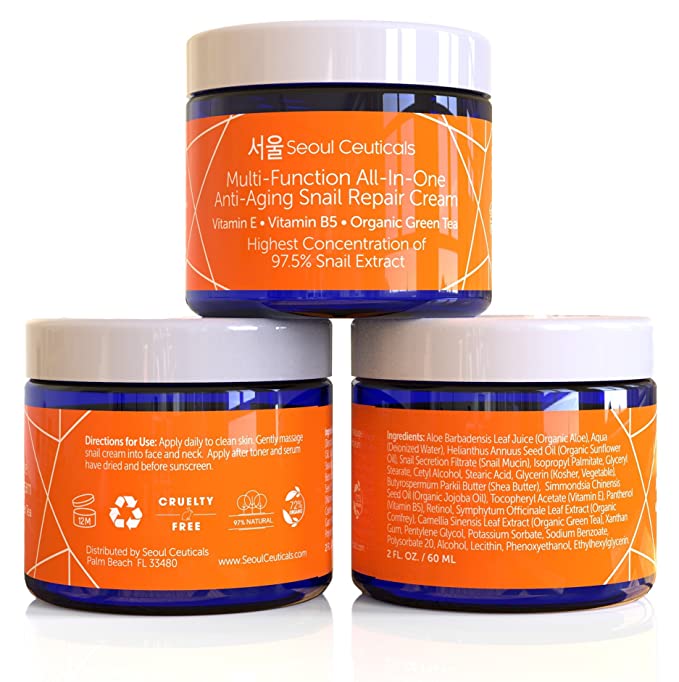The products and services mentioned below were selected independent of sales and advertising. However, Don't Waste Your Money may receive a small commission from the purchase of any products or services through an affiliate link to the retailer's website.
One of the biggest skincare trends in recent years is the embrace of Korean products and practices. Remember the 10-step Korean skincare routine? Today it seems like a short-lived fad, but South Korea is now the world’s third-largest exporter of beauty products.
If you’ve explored K-beauty at all, you’ve probably encountered a curious-sounding ingredient: Snail mucin. Often found in moisturizers and eye creams, it’s touted as a highly effective “hero” ingredient.
But: snails? And that word, “mucin,” looks a bit suspicious. What on earth is it? More important, what’s it supposed to do?
Well, if you’re easily grossed out, I have bad news for you. It’s exactly what it sounds like — snail slime. Yes, for your face. But it’s not as weird as it may seem at first.
For one thing, it’s not new. Back in the early 1980s, snail farmers in Chile — who were raising the creatures to become French escargot — noticed that their hands were super-soft and seemed to heal quickly from minor injuries.
Eventually, a moisturizer using snail mucin (the “slime”) hit the market, and here we are today, still talking about mucin-ing our faces.
Modern mucin mavens claim that the substance offers reparative and anti-aging benefits, as well as just being a great moisturizer.
Mucin is secreted by snails as they putter around, lubricating surfaces and helping the snail heal any nicks and cuts along the way. Indeed, some of the contents of mucin are familiar to skincare enthusiasts: hyaluronic acid, glycolic acid, zinc, allantoin.
The few studies performed show good results, mostly on folks healing from burns. The evidence is less clear when it’s used on uninjured skin — anti-aging improvements may simply be due to the plumping effects of added moisture.
There’s also the issue of ethics. How are companies retrieving mucin from snails?
The answer is murky. Most snail-raising operations claim that the snails are unharmed by the extraction and live comfortable snail lives. Some companies claim the snails are simply left to crawl around on special netting that collects the mucin. Journalists haven’t had much luck at observing the process, though.
If you’re ready to take the plunge into snail skincare, your timing is impeccable. A potent snail mucin night cream is currently on sale at Amazon.
SeoulCeuticals’ Multi-Function All-In-One Anti-Aging Snail Repair Cream normally sells for $29; it’s now reduced to $20 for a 2-ounce tub.
The snail mucin ingredient is advertised to be at 97.5% concentration, which is to say it’s not filtered or diluted to death. The formula also contains nourishing vitamins E and B5, plus hydrating jojoba and shea butter.
Reviewers are sweet on this moisturizer, too, with more than 10,400 users rating it with five stars.
Verified purchaser Kelly titled her review “LOVE and HIGHLY recommend,” saying she “instantly fell in love with it” and has been using it for nearly two years.
Brianna, another customer, is a fan of the scent, praising its “orange-citrus” fragrance. She says it helped heal acne scarring and keeps skin hydrated for hours.
Convinced? Make like a snail and slide over to Amazon to give it a try.











